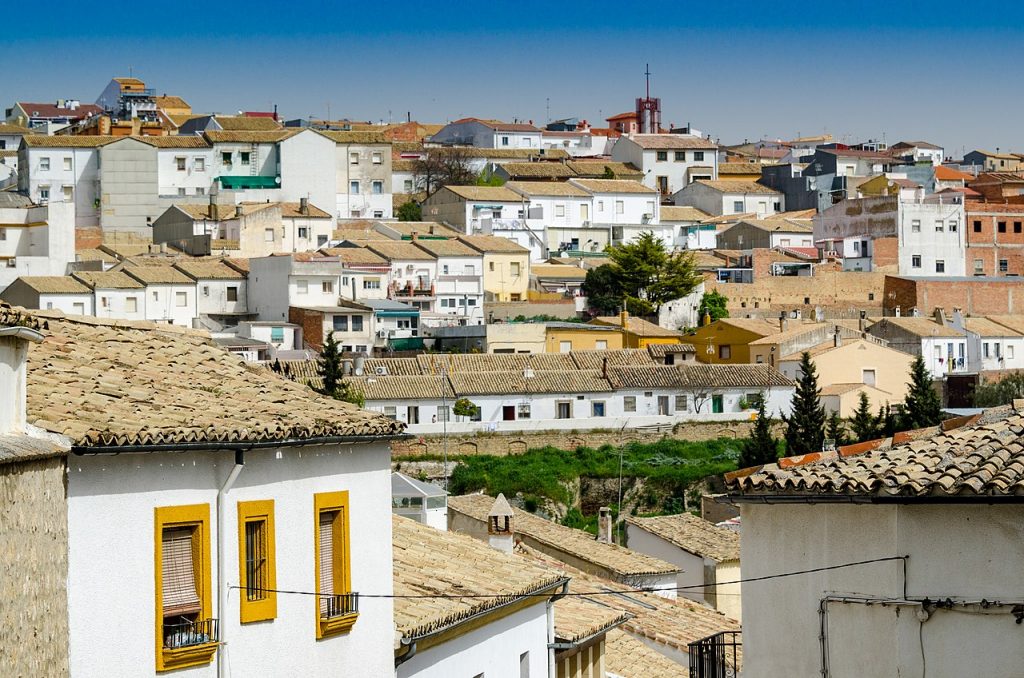Located an hour drive from Jaen, Úbeda’s story is similar to the one of the Jewish community in Jaen. But since the accidental discovery of Sinagoga del Agua -maybe the most ancient synagogue in the country- the city became a not to be missed destination in Spain.

The Synagogue of Water was discovered during building works carried out in several real estate properties located in the heart of the historic centre. The original idea of the project was to transform the old property into apartments, shops and car parks. After the discovery of various elements, such as the arches of the Synagogue, The Women’s Gallery and the Ritual Bath (Mikveh), the initial project was abandoned. The recovery of this place began in 2007, and since 2010 it has been open to the public. Based on the existing research, it is likely the synagogue was built before the fourteenth century. Note that although the structure of the building suggests that it housed a synagogue, there is currently no documentation that corroborates this theory.
You will start your visit by the “Inquisitor’s room”. The name of this first room is due to the close resemblance that this building has to a house that is historically known as “The House of the Inquisitor” and, in its facade, preserves the coat of arms of the Holy Office. (Calle Las Parras No. 8).
This room – together with the courtyard, the cellar and the ovens – corresponds with the possible house of the rabbi in the Middle Ages.

In the patio, the arcaded courtyard divides the main sections of the entrance to the synagogue. The most representative pieces of this room are two of the complete and original columns that appear within it. These are well-defined columns with patterns of palm leaves, or “the tree of life,” with its seven branches symbolizing the Jewish Menorah by the capitals. The other important element of the patio is the entrance to the synagogue. It is called Puerta del Alma. The columns, steps and several of the segments forming the arch are original. Other parts are replicas because some of the originals have been found embedded in various walls dividing the different rooms (see the voussoir at the reception). Above “La Puerta del Alma” is a stone representing a Star of David.
The synagogue is a large room split into three naves separated by original pointed arches, which remained embedded and hidden in the walls of houses. The spaces have a structure of medieval Spanish synagogues – small rooms below street level with austere building materials.
Noteworthy are the four original columns above the left arcade that form The Women’s Gallery, which is hidden behind shutters.
Other important elements of the room are the authentic wooden ceiling with paintings. There are seven wells in total, which helps us to understand how important the presence of underground water is when building synagogues. Two of them still contain water and have their original rim.
The Mikveh can be accessed via a narrow passageway that has been excavated into rock. Hidden in what was thought to be an old cellar, between debris, appears to be a purification ritual bath or Mikveh. The bath is covered by a modest pointed vault of fine masonry. In the centre there is a hole with steps dug out from the rock where the water springs naturally and continuously.
The cellar contains a lowered barrel vault and floor and authentic half-buried jars. They were used to store olive oil and kosher wine as well as various foods. Next to the cellar is a space excavated into the rock with a flat roof which, judging by its condition and by the excavated holes, seems to be a kitchen and ovens used to make unleavened bread and to keep the food warm for Shabbat.
By the end of your visit, you can as well visit a small exhibition where cult objects are presented. Please note that you must book your visit, which is led by a guide and in small groups of visitors.